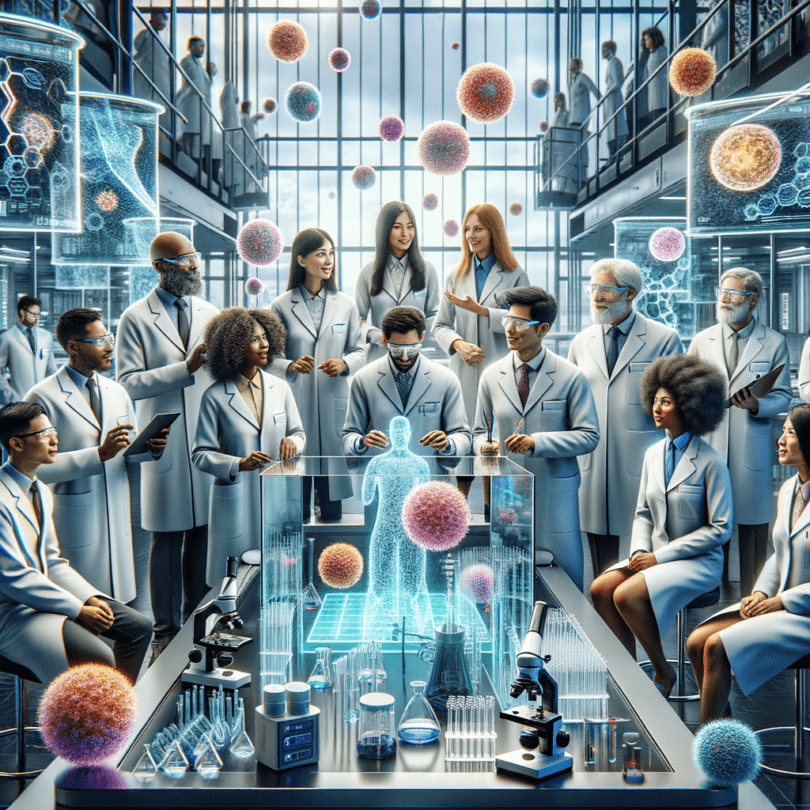I’m intrigued by the whole idea of the fountain of youth. It’s like, who wouldn’t want to peek in the mirror and see a more refreshed reflection smiling back? Sure, there’s a touch of vanity, but it’s not just about that. The idea of aging backwards – fiddling with our biological clocks – has major implications for our health, longevity, and overall well-being. It’s just so captivating and feels a bit sci-fi, doesn’t it? But I gotta say, while I wish we had a magical fix, science is more of a cautious explorer, teasing us with fascinating possibilities and whispering “what if?”
The Science Behind Aging
So, what’s the deal with aging, really? Each click of the clock chips away at us at a cellular level. It’s like, our cells are these amazing little machines, but they experience wear and tear. Picture it like your favorite jeans starting to fray at the edges. Inevitable, right? But maybe, just maybe, science can help slow that down or patch them up. Our DNA, proteins, and mitochondria are all part of this crazy dance.
Rewinding the Biological Clock
Now, how are scientists attempting to turn back the clock? It’s not like hitting Control-Z, but they have a few tricks up their sleeves. One buzzword? Telomeres. They’re like little caps on our DNA strands, much like those plastic tips on shoelaces. Each time cells divide, these caps shorten until the shoelace unravels. But some brainy scientists are figuring out ways to keep those telomeres long and sturdy, which might keep cells youthful and spry.
Another curious concept is cellular senescence. Over time, some cells get to a point where they just want to retire, but they hang around, causing a bit of a ruckus. Scientists are tinkering with evicting these cellular couch potatoes to refresh the system with new recruits.
The Genetic Whisperers
Gene editing is a bit like whispering secrets into the genetic code. Imagine tweaking some genes, turning back the genetic clock. CRISPR-Cas9 is like the rock star of this world, a tool that edits DNA with the finesse of precision scissors. But hey, let’s not forget, flipping genetic switches isn’t child’s play. It’s more like rewriting a novel, full of twists and turns. What if one edit creates unexpected chaos tomorrow? Definitely food for thought.
Magic in a Pill
Who hasn’t dreamt about capturing youth in a pill? It sounds fantastical, but hey, science could be getting there. There’s talk about things like metformin, initially for diabetes, now making waves with chatter about life extension. Then you have NMN and NR — those fancy acronyms hinting at boosting mitochondria and putting a lively spring back in your step.
Of course, the skeptics are here, arms crossed, cautioning us to take this dance slow. And they have a point. We’re peeking into a story still in the making, unsure of how it ends.
Bouncing Nature’s Signals
Hormesis might sound like you’re about to sneeze, but it’s about putting purposeful stress on the body — the good kind. Imagine nudging your body with controlled challenges, like heat or cold, to have it bounce back resiliently. Researchers are exploring how to use hormesis to coax the body into a state of youthful rebellion.
Lifestyle Tweaks: Science Meets Common Sense
Amidst all the shiny breakthroughs, let’s not forget the comforting hugs of common sense. Eating right and exercising have been allies in staying youthful long before science got on board. It’s like acknowledging an old friend for their wisdom and realizing, new doesn’t always mean better.
Emotional Connection with Aging
While chasing youth, let’s not forget the beautiful tapestry that aging weaves. Wrinkles and gray hairs aren’t the whole story. There’s grace, wisdom, and stories etched into each line. Embracing the vulnerability and reflection that come with age makes this all deeply personal. It’s your story, my story, our shared adventure. Science is just a compass guiding us to dance the dance of time, not fight it.
The Ethical Tightrope
In all the excitement, we must discuss the ethical tightrope we’re walking. Entering this new world, we face the line between aiding humanity and potentially driving inequality. What if age reversal becomes a luxury only a chosen few can afford? That thought sends chills down my spine.
Scientists are focused on ensuring accessibility, balancing commercial interests with a desire to share the benefits widely. It’s about making longevity a universal possibility.
The Long Game
Peering into the future, this research field is just beginning, making tiny steps forward, both thrilling and thought-provoking. Mentally, I’m already picturing a world where age truly is just a number. But we must tread carefully and balance excitement with caution. Our conversations shouldn’t just be about reversing aging but how to do it ethically and responsibly.
Science may not have a cure-all for aging, only dreams and whispers of what’s possible. As this journey unfolds, it’s a deeply human endeavor we must embrace, filled with moments to savor. Reversing aging could eventually be less about turning back time and more about moving through it gracefully, arm in arm with the guiding hand of science.

